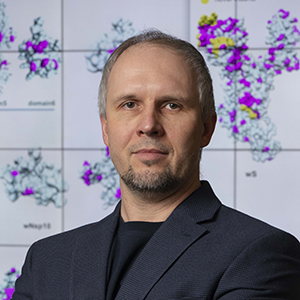WPI Part of Gene Splicing Research Published in Nature Neuroscience
Department(s):
Marketing CommunicationsDmitry Korkin, the Harold L. Jurist ’61 and Heather E. Jurist Dean’s Professor of computer science and his Ph.D. student Oleksandr Narykov, were part of a Weill Cornell Medicine-led study the role of alternative splicing in the brain.

The team’s findings were recently published in the journal Nature Neuroscience. The study was part of the National Institutes of Health’s BRAIN Initiative, a partnership between federal and non-federal partners with a common goal of accelerating the development of innovative neurotechnologies.
Korkin said WPI was part of the multi-institution collaboration that sought to better understand how alternative splicing–a mechanism for a single gene to produce different proteins with different functions–works in the human brain’s complex neural networks. He said WPI provided computational and bioinformatic expertise on the project.
Korkin said the team was able to present a previously unseen level of detail about the part that alternative splicing plays in making proteins multifaceted, multifunctional players in the human brain’s various regions, for different types of neurons and at different developmental stages of the organism.
“Proteins are complex machines,” Korkin said. “A protein does all these things, but maybe not all its functions are needed at a certain point. Maybe at the developmental stage you need a certain function but when a human or a mouse becomes an adult, you need something else from the same protein.”
That study of these particular “on/off switches” in our genetic makeup could give researchers critical clues needed to fight various neurological diseases.
“It gives us some advance understanding of what can go wrong in different neurological diseases,” Korkin said. “It gives us a better understanding of the role of alternative splicing in diseases, and could give us the means to use this understanding for early diagnostics. Now we can look at things going wrong not at a genetic level, but at a more foundational alternative splicing level.”
Topics
People

